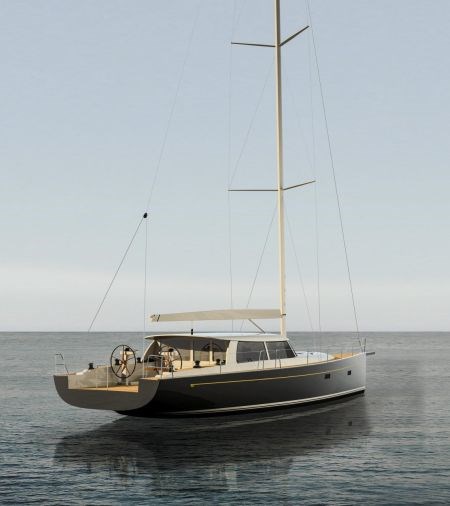Carbon fiber/epoxy in production boats
Scout Boats and now Hinckley Yachts showcase how demand for lighter, faster performance pushes materials and process change.
I’ve reported on carbon fiber use in the marine industry for over a decade now. It’s one of those trends that is always “imminent”. However, when you look at new product announcements over the past few years, a trend does seem to be emerging.
 Sport and new Niniette 66 |
 |
 |
|
All of these production boats use carbon fiber and resin infusion. The Scout and Hinckley models also use epoxy resin. Carbon fiber has made its way into production boats in the past, for example in Baja’s 30-ft Outlaw. But then the recession hit, and the marine market dropped by 80%.
As the marine market has rebounded, trends like black hulls (e.g., Midnight Express) and faster center console fishing boats have helped to push infusion and carbon fiber into production boats.
Scout Boats (Summerville, SC, US) announced its 420 LXF in 2015 and broke ground last November on an $11 million, 120,000-ft2 expansion next to its current site, which will house its newest, 53-ft center console — the 530 LXF. Though production is slated for this June, the 530 LXF is already sold out through the end of 2019.
Scout Boats owner, found and president Steve Potts has said he can "count on one hand" the number of other manufacturers in the world, including Boeing, who build composite products utilizing the same methodology: infusion with carbon fiber and epoxy. He added that this is state-of-the-art manufacturing and results in lighter, stronger and more fuel-efficient products — obviously performance that buyers are willing to pay for (a Scout 420 LXF starts at $750,000 and a 530 LXF is said to cost around $2 million).

Hinckley’s new Sou’wester 53 uses carbon fiber/epoxy construction.
SOURCE: Hinckley.
After launching the new Sou’wester 53 carbon fiber/epoxy sailing yacht on March 16, Hinckley (Southwest Harbor, ME, US) now unveils its new performance brand and two new high-performance models, the 40-ft Sport Boat and Sport Boat Center Cabin — both touted as offering speeds over 60 mph thanks to lightweight carbon fiber/epoxy construction. The first Sport Boat will launch July 2018.
“This is one of our most important product introductions in years”, said Hinckley chief marketing officer Pete Saladino. “For nearly 25 years, we have been vacuum-infusing resin into layers of carbon fiber and KEVLAR [aramid fiber] spanning the full length of our yachts. We are now bringing our design refinement and unparalleled level of boatbuilding expertise to performance boats”.
Epoxy resin infusion is also key in the Sout’wester 53, used to securely bond its carbon and KEVLAR hull to the structural grid.
So what next? Maybe infused boats using a recyclable epoxy (like Connora, with sister company Entropy now part of Gougeon Brothers) and also boats using recycled carbon fiber. Then we will be seeing not only improved performance, but improved sustainability as well.
Related Content
-
Plant tour: Airbus, Illescas, Spain
Airbus’ Illescas facility, featuring highly automated composites processes for the A350 lower wing cover and one-piece Section 19 fuselage barrels, works toward production ramp-ups and next-generation aircraft.
-
“Structured air” TPS safeguards composite structures
Powered by an 85% air/15% pure polyimide aerogel, Blueshift’s novel material system protects structures during transient thermal events from -200°C to beyond 2400°C for rockets, battery boxes and more.
-
Low-cost, efficient CFRP anisogrid lattice structures
CIRA uses patented parallel winding, dry fiber, silicone tooling and resin infusion to cut labor for lightweight, heavily loaded space applications.







